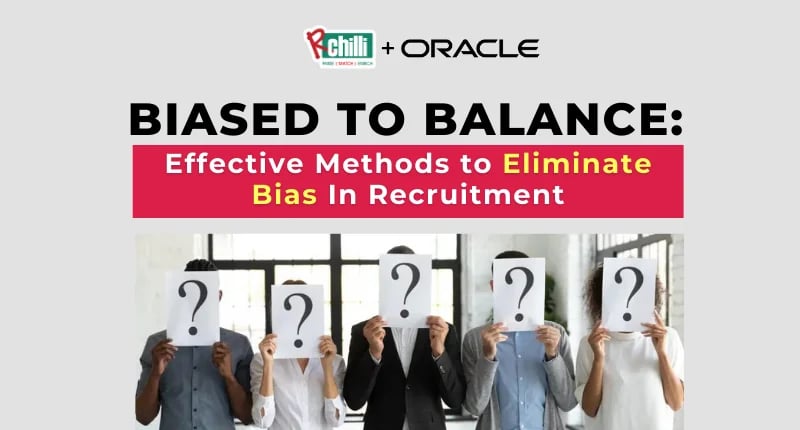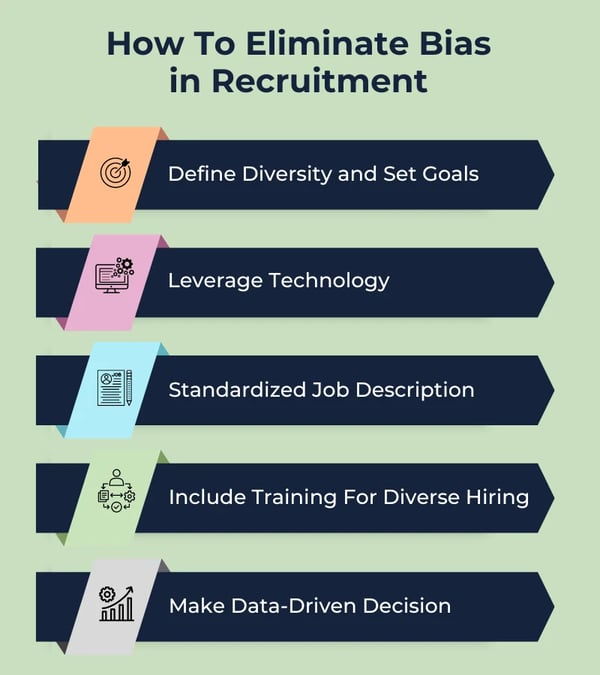
In today's competitive business environment, an organization's strength lies not just in its products but significantly in the talents and diversity of its workforce. As everyone strives for expansion and growth, it is crucial to understand how hiring practices can profoundly shape an organization's future.
Often subtle and unconscious, hiring biases can limit the ability to attract and retain the best talents from a diverse pool of candidates. When biases influence hiring decisions, the company may unintentionally overlook qualified or talented candidates who could bring essential skills and new perspectives.
This oversight can lead to a homogenous workforce, limiting diversity and impacting the organization's vision and customer relationships.
In such an environment, CHROs will find themselves at the rudder post, as everybody expects them to rescue the organization from trouble. That's why they must up their game and make critical decisions to determine the organization's future.
This informative blog will explore how unconscious bias affects the organization and the practical implementation strategies.
How Bias Affects a Company?
Bias in the workplace, whether based on gender, race, age, or other factors, can significantly affect an organization in several detrimental ways:
1. Lack of Innovation and Workforce Diversity
Bias hiring can severely limit an organization's innovative capability. Diverse teams bring a range of perspectives that are important for creative problem-solving and innovation.
Organizations hiring based on biases might miss out on unique ideas and perspectives. This can lead to repetitive strategies and slow progress. Embracing diversity can help organizations innovate more effectively and adapt to changing markets.
2. Poor Job Satisfaction and Performance
Bias in the workplace can demoralize employees, leading to lower job satisfaction and engagement.
When employees feel that their opportunities for advancement are limited due to bias, their motivation and commitment to the organization can wane. This demotivation can manifest as reduced productivity, directly impacting the company's bottom line.
Furthermore, employees hired based on bias are less likely to contribute fully or share innovative ideas out of fear that their contributions will be undervalued.
3. Affects Recruitment and Retention
Today, skilled candidates are more likely to find employment with organizations committed to diversity and inclusion. Moreover, biased hiring can lead to poor job fit and increase employee turnover, which increases the cost of hiring. High employee turnover affects regular operational work and decreases the team's morale.
4. Lowers Operational Efficiency
Biased recruitment mainly results in hiring underqualified individuals, which affects operational efficiency. The aftereffect of biased hiring directly leads to lower productivity and poor organizational decision-making, affecting the performance and delivery of the product or services.
5. Bad Market Reputation and Customer Relationship
Bias can tarnish an organization's reputation, affecting its client, partner, and investor relationships. We are in an era where social responsibility is highly valued. In the age of social media, employer review sites such as Glassdoor, news, etc., play vital roles. For example, suppose some ex-employees or clients leave a negative comment about the organization's services or work culture. In that case, it will lead to brand erosion and a decrease in customer loyalty.
How To Eliminate Bias in Recruitment
Overcoming unconscious bias in recruitment is crucial for ensuring a fair and inclusive hiring process. Here are some strategies to help address and reduce unconscious biases:

1. Define Diversity and Set Goals
C-level managers must invest their time and set organizational goals so everyone knows that removing bias and building diversity is essential. To balance the different perspectives, include members from various backgrounds in the hiring panel. This will reduce the influence of individual bias.
Diversity brings different viewpoints, creativity, and innovation that help the organization connect and boost market appeal.
2. Leverage Technology
Automating hiring practices improves productivity and saves time. Introducing advanced AI technology is a true mantra for hiring talent in this digital age. Include tools that can build skilled teams by analyzing skill gaps. This makes it easy for hiring management to see what skills are missing from a resume. Some tools can hide personal details on resumes, letting recruiters focus on necessary qualifications like skills, certifications, licenses, and education.
3. Standardized Job Description
Develop clear, consistent, and objective job descriptions focusing on the skills and experiences necessary for the job, avoiding language that could unconsciously discourage diverse candidates. This approach ensures all candidates are evaluated based on relevant qualifications and abilities directly linked to job performance, promoting a fair and objective recruitment process.
4. Include Training For Diverse Hiring
To fight against bias in hiring, implementing comprehensive awareness training for recruiters and hiring managers is essential. This training should focus on recognizing and understanding various biases and their impacts on decision-making. Such training must be provided at regular times to manage their own biases.
5. Make Data-Driven Decision
Adopting a data-driven decision-making approach is critical to eliminating bias in hiring. This method systematically analyzes candidate data based on objective criteria such as skills tests, past job performance, and educational achievements.
By using statistical tools to assess and compare candidate qualifications, organizations can make impartial decisions focusing solely on professional merits.
Additionally, implementing standardized scoring systems and ensuring data simplification is consistent across all hiring stages can reduce subjective biases and promote fairness in recruitment processes.
A Few Words
Unconscious bias is inescapable, but equipping your organization with the perfect tools and processes can significantly reduce its impact. Advanced and new AI technologies provide rich insights to guide data-driven decision-making, underpinning regular diversity training. All the pointers mentioned are crucial in helping management to recognize and reduce their bias blind spots.
If you need customizable advice on which solution is more effective in mitigating the bias, speak with our solution expert.
Source: RChilli blog

You need to be a member of RecruitingBlogs to add comments!
Join RecruitingBlogs